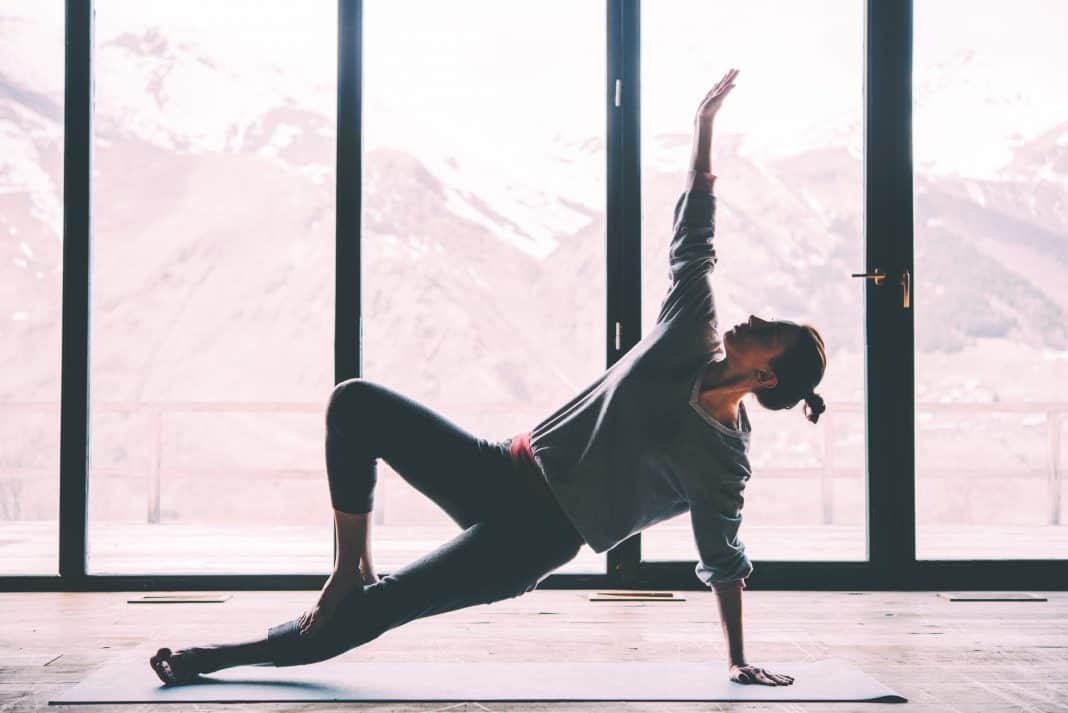Yoga has gained popularity over recent years with many an Instagram influencer promoting the practice. I’ve practised yoga for a few years, mainly through classes on YouTube, and now that we’re moving past Covid restrictions, at a weekly class I discovered earlier this year in my local area.
While I don’t love headstands and find some of the other poses tricky to master, I always feel better after a 45- to 60-minute session. My body moves better, I’m in a better headspace and, overall, just feel great.
So, what is it about yoga that makes it such a great practice to include within your workout routine? This month I spoke with Rebel Tucker, a board member of Yoga Australia, to find out more. And let’s just say that yoga is a lot more than merely wearing yoga pants and walking around with your yoga mat in hand, sipping on green juices.
What is yoga?
Yoga is a philosophy and practice that assists in creating equanimity of mind and wisdom in action. It teaches us how to live well so that we enjoy better physical, mental and emotional health.
Yoga enables us to be more comfortable with uncertainty and to reduce the suffering we experience. We can achieve this through the regular practice of physical exercises, breathing exercises, mindfulness practices and adhering to the ethical guidelines for living well.
Yoga is a holistic system for well-being, a comprehensive biopsychosocial practice.
What are some of the health benefits of yoga? How can yoga support physical and mental health?
Yoga has many benefits, many of which are beginning to be highlighted in research. Improvements in mental health conditions such as anxiety and depression are well documented. Certain yoga practices can facilitate better sleep. Yoga can help with managing chronic pain. There are obvious benefits in strength and flexibility, subsequent range of motion and better mobility.
How does yoga assist with reducing stress and inflammatory responses in the body?
Catherine Bushnell and Chantal Villemure [of the National Centre for Complementary and Alternative Medicine in the US] are researchers who study pain, and they’ve established that regular yoga practices have the potential to relieve chronic pain. They’ve shown that regular practice has the opposite effect on the brain as that of chronic pain.
Breathing practices (‘pranayamas’) can reduce inflammation, improve longevity, and reduce interleukin 6 (an inflammatory cytokine). This in turn can reduce the risk of type 2 diabetes, stroke, heart disease, arthritis and other diseases.
Yoga is an incredible resource for combatting stress by helping us regulate our nervous system. A simple description is that it helps take us out of the sympathetic ‘stress’ response and into the parasympathetic ‘heal’ response.
How can people start practising yoga? What are the recommendations for those new to the discipline?
Yoga is definitely more than a physical exercise practice. Fundamentally, it’s the practice of awareness. So, just spending 10 minutes a day doing simple mindfulness practices is a great way to start doing yoga.
There are many apps that can be freely downloaded, that can be easily practised at home. The key is finding a simple practice that you like, that you can practice regularly, ideally on a daily basis.
Finding a qualified local yoga teacher and starting with a basic foundation, or gentle style is the best way to get started. If you have some physical limitations or health concerns, it’s recommended to find a qualified yoga therapist and do a one-on-one session. Yoga therapists have more in-depth training and are skilled in assisting those who need help with particular health conditions.
What happens in a typical yoga class?
A typical yoga class will begin with some quiet time to begin noticing how your physical body is feeling, noticing your breathing, and becoming aware of the train of thoughts in your mind. Then, we begin to focus on the breath and coordinating simple movements and postures with gentle breathing.
There might be some stronger options for those that are regular students, and less challenging options for those who are new to yoga, have injuries, or just want to take it easier.
There’s typically a warm-up phase, active standing part, then seated or lying postures on the floor, and classes finish with some breath practices, mindfulness, and the wonderful practice of ‘savasana’ – stillness of body and mind – and perhaps a mantra, such as ‘Om’, and we might end by saying ‘Namaste’, a gesture of gratitude and acknowledgement.
What advice can pharmacy assistants give to their customers who may be looking at starting yoga?
Pharmacy assistants can rest assured that qualified yoga teachers and yoga therapists will provide classes and sessions that are both safe and effective for improving health and well-being.
Yoga can help with stress management, pain management, mental health support and mobility. Yoga therapy can assist with other more complex health conditions, especially alongside medical treatment.
Some medical practitioners are suggesting their patients seek out certified yoga teachers and therapists to support their medical treatments. Yoga teachers who are members of Yoga Australia are recognised as having undergone training that qualifies them to teach classes and private sessions, and qualified yoga therapists can provide one-on-one therapeutic sessions. They also commit to ongoing professional development and adherence to our code of professional conduct. They have the requisite insurance and first aid qualifications.
Yoga is usually a welcome relaxing experience that, when practised regularly, has some wonderful benefits for health and wellbeing.
For more information or to find a Yoga Australia registered teacher, visit: yogaaustralia.org.au.
This feature was originally published in the October issue of Retail Pharmacy Assistants e-magazine – live now!







